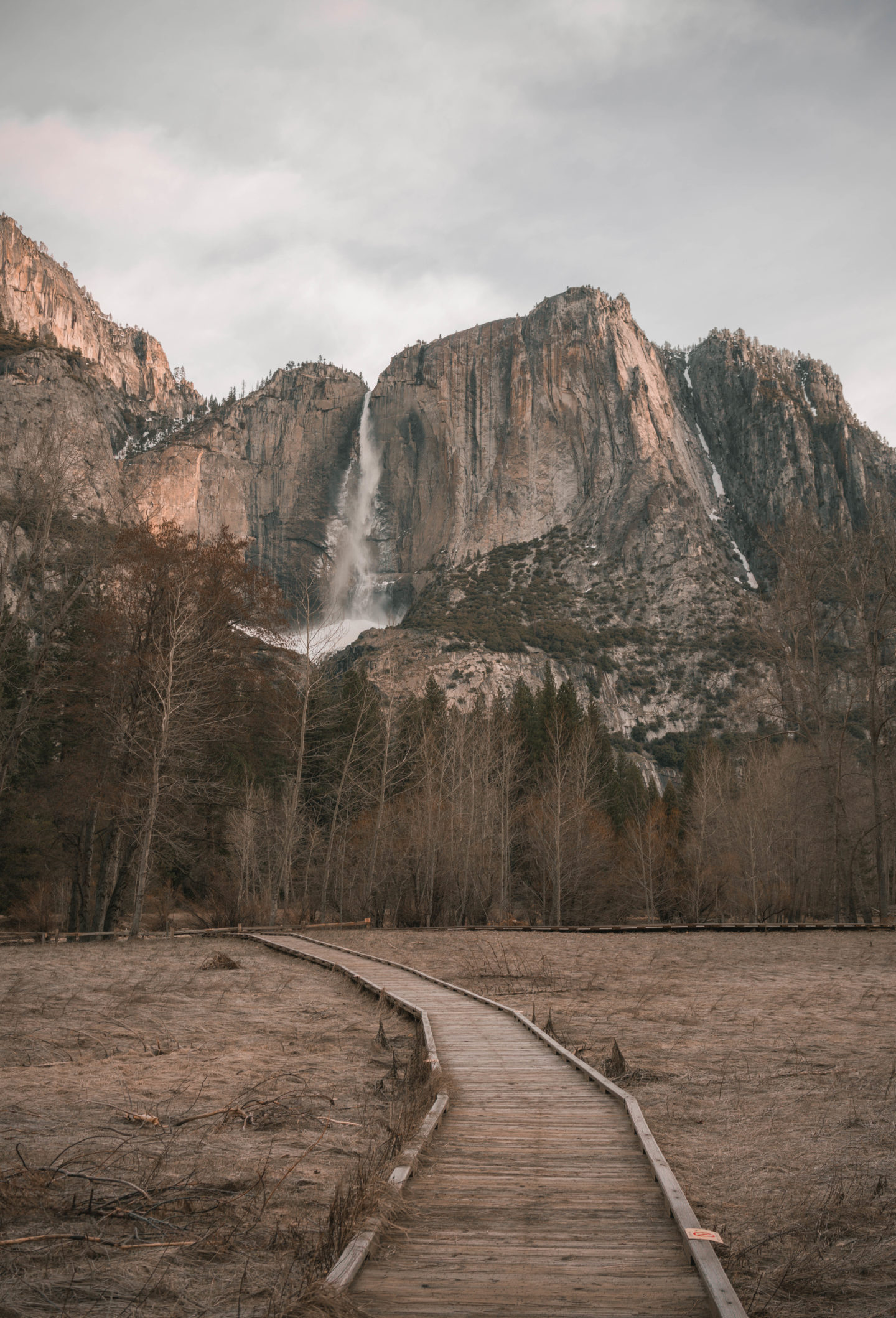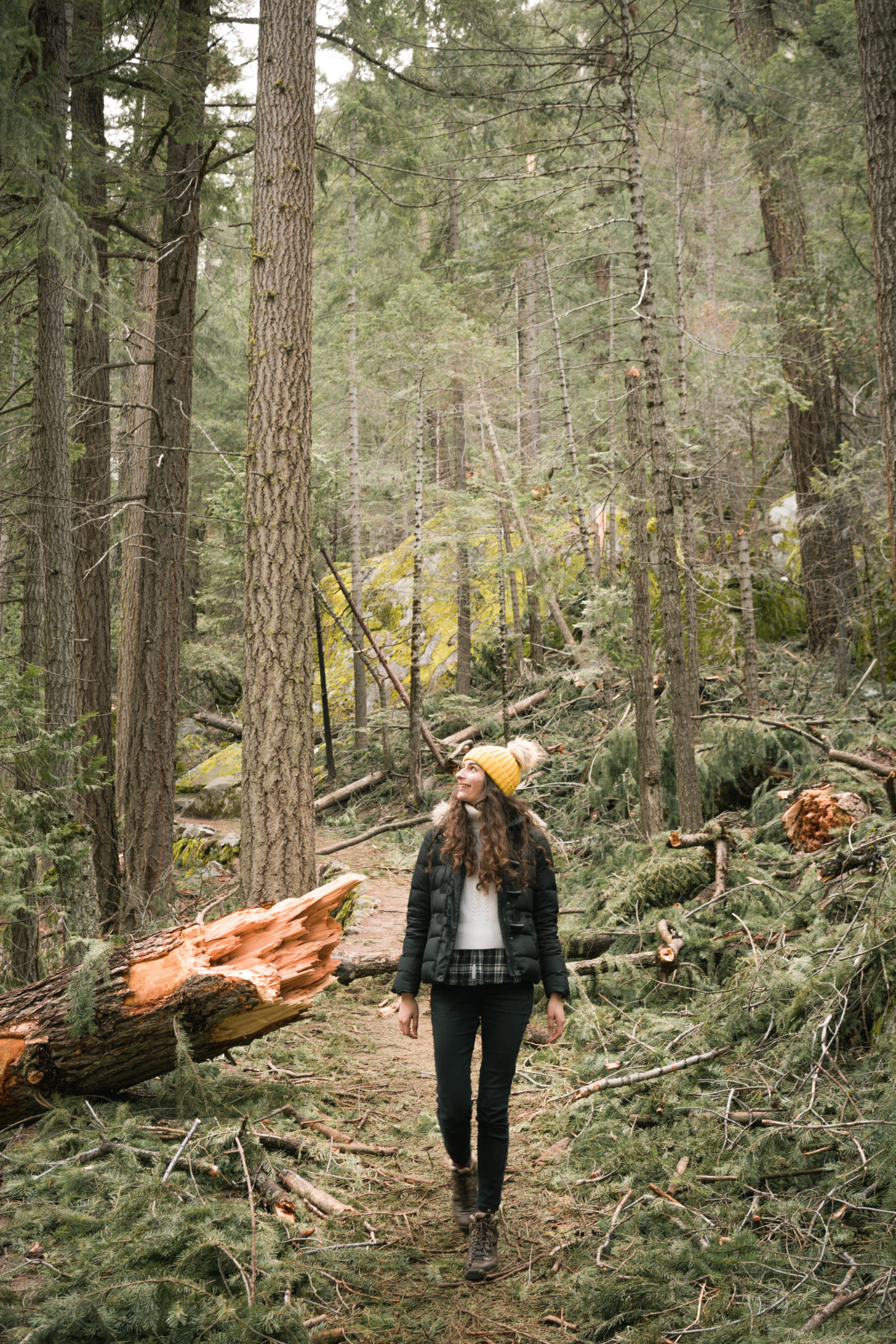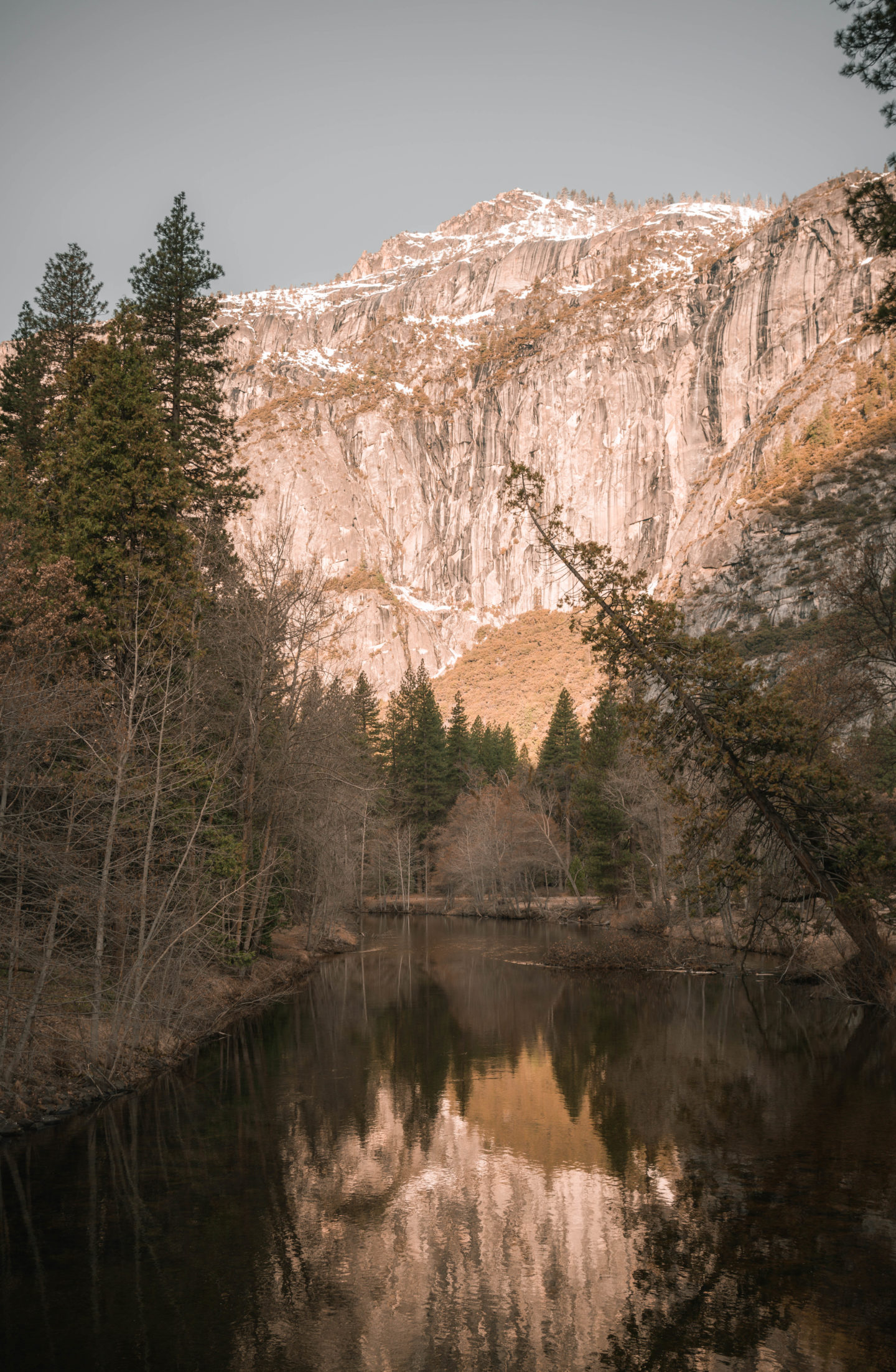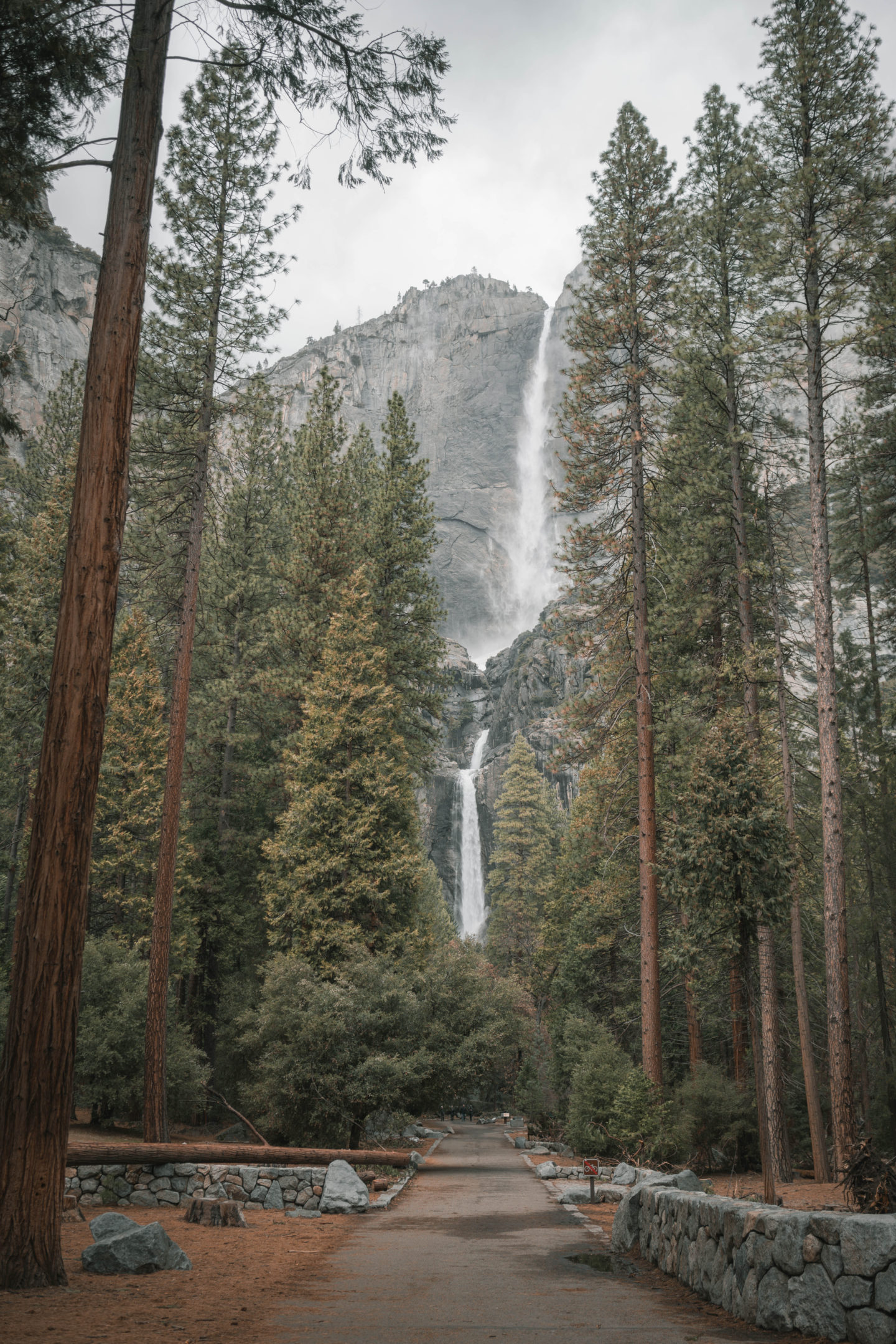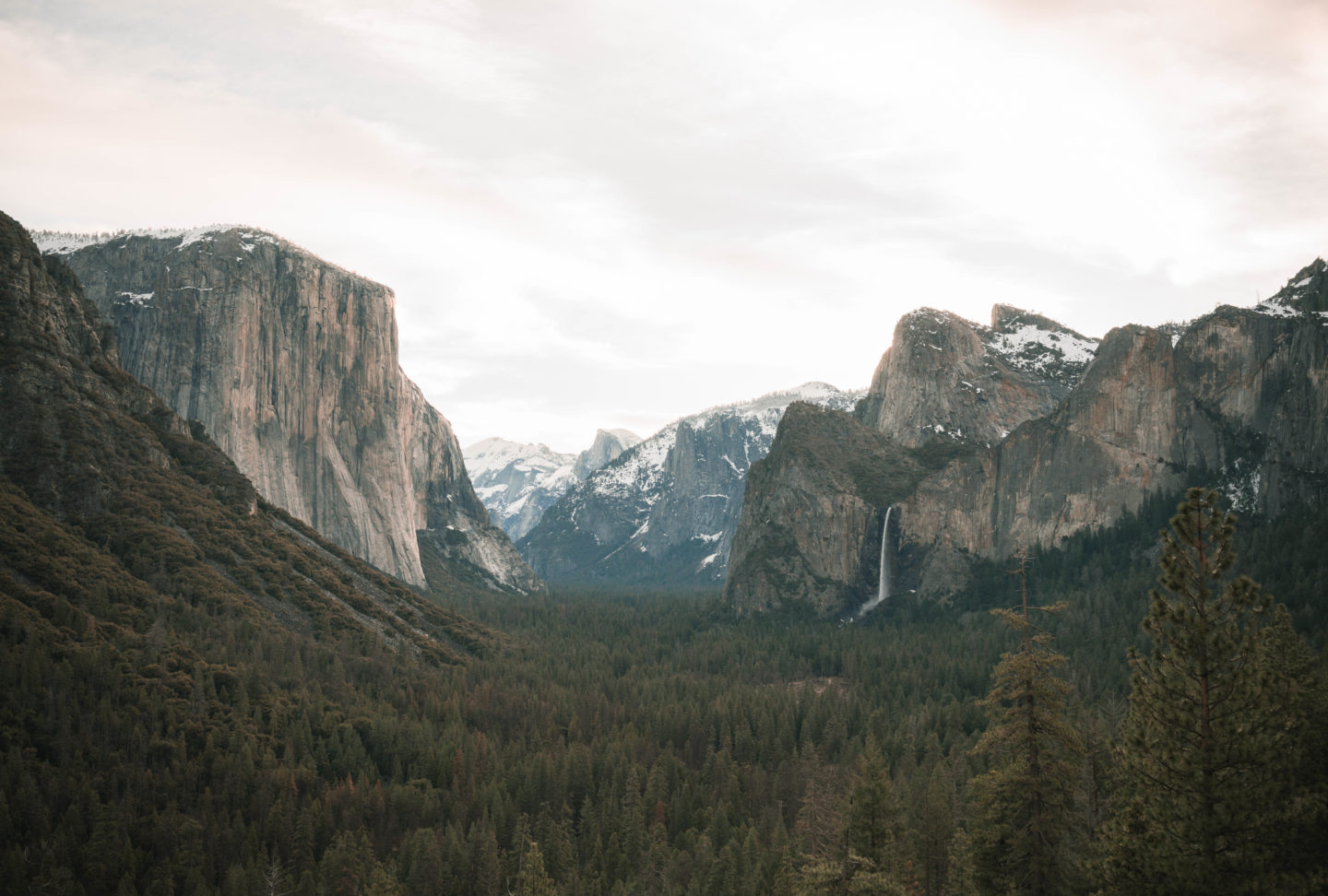
For many, Yosemite National Park isn’t simply a stop on your road trip through California – it is the reason to board a plane to America in the first place.
With soaring granite facades that dwarf even the largest SUVs, filled with unforgettable moments and beautiful sights, it is no surprise that Yosemite is one of America’s favourite national parks attracting nearly 4 million visits per year.
For visitors to Yosemite National Park in March, there are some key pieces of information you will need to help you make the most of your outdoors adventure and to avoid disappointment.
If you’re planning a visit in winter, you probably already know that it will be off peak, that there might be some ice around and have likely seen some pictures of snowy vistas to stoke your wanderlust.
But what about everything else? In order to fully prepare for your stay in one of the most famous valleys in the Americas, I wanted to share some of the less obvious but incredibly useful travel tips and insights I’ve learned about visiting Yosemite in late March, how to get around, which areas will be accessible, and why it’s a good idea to carry tyre chains just in case (even though you probably won’t need to use them).
Here’s 13 very useful things to know before visiting Yosemite in March!
It’s a delightful time to visit
From the dramatic rock formations blanketed in snow, beautiful, cascading waterfalls, expansive meadows and thousand year old trees, our time in Yosemite was in every sense, awe-inspiring.
A visit in March is a good choice because you will have much of the park almost entirely to yourself in the winter months.
There are few places I have experienced such serenity and silence nor such a sense of wonder and appreciation for the natural world.
The snowmelt fed streams gushed and sparkled and the crisp March air left our senses and spirits rejuvenated.
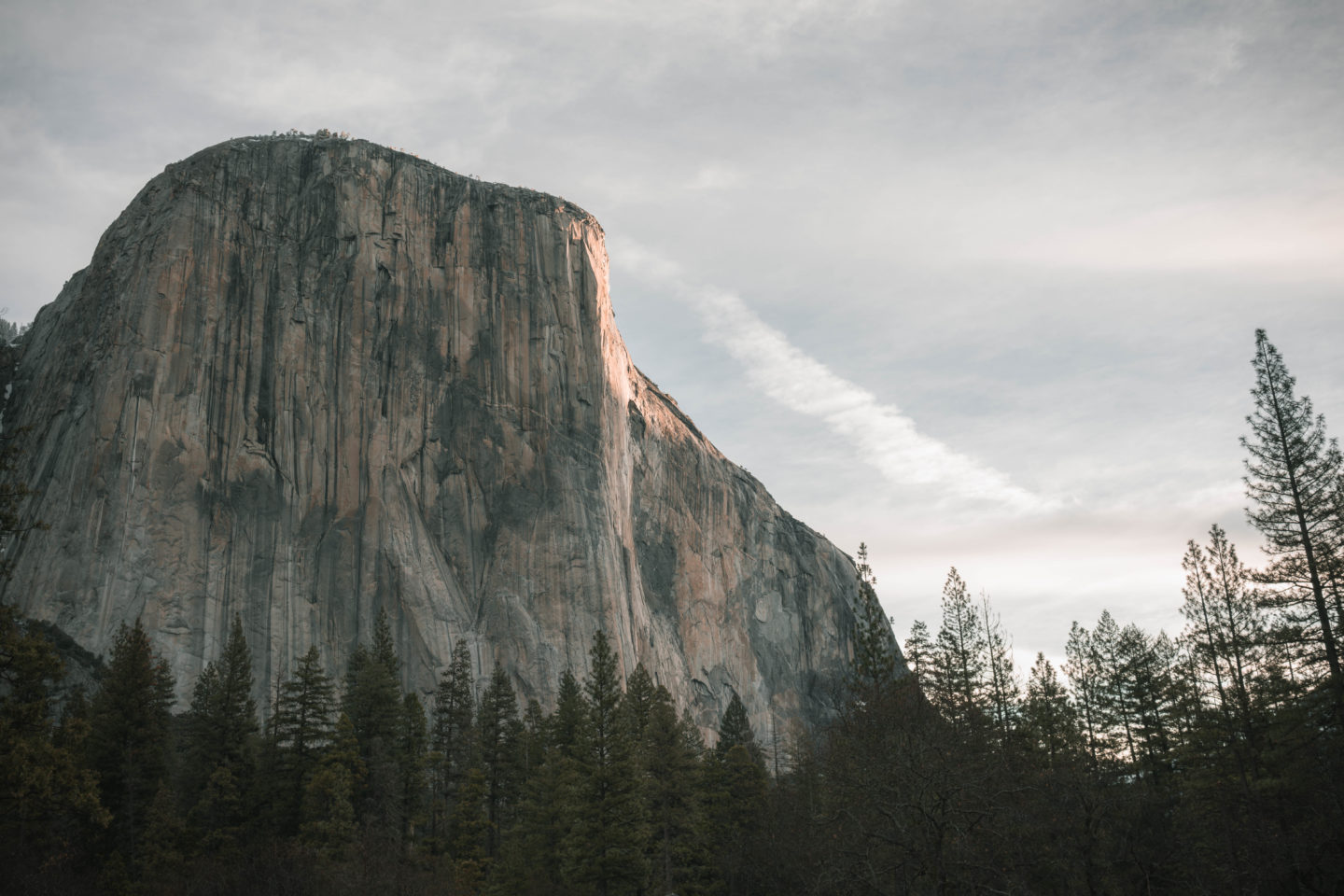
It won’t be too crowded
Nearly 75% of visitors come during the busiest six months – May through October, when at times it can feel a little too crowded.
But during the winter months, adventurers undeterred by the prospect of snow will often find themselves completely alone in the wilderness, free of the endless line of tour busses emptying their load of tourists at Yosemite’s main attractions.
The fact we had some places all to ourselves made visiting Yosemite at this time of year even more magical.
It’ll most likely be chilly
Winter in Yosemite (December-March) is known as the season of snow and solitude, although sunny days are not uncommon.
Temperatures and snowfall range depending on where you are in the park and your level of elevation. In March, average temperatures in the valley floor in Yosemite range from 1-14 degrees Celsius. At an altitude of 4,000 feet, the valley is open year round and fairly temperate by High Sierra standards.
By the time we arrived in late March, there was little to no snow at all in Yosemite Valley. It wasn’t until we hiked up higher, that we encountered snowy conditions on the trails.
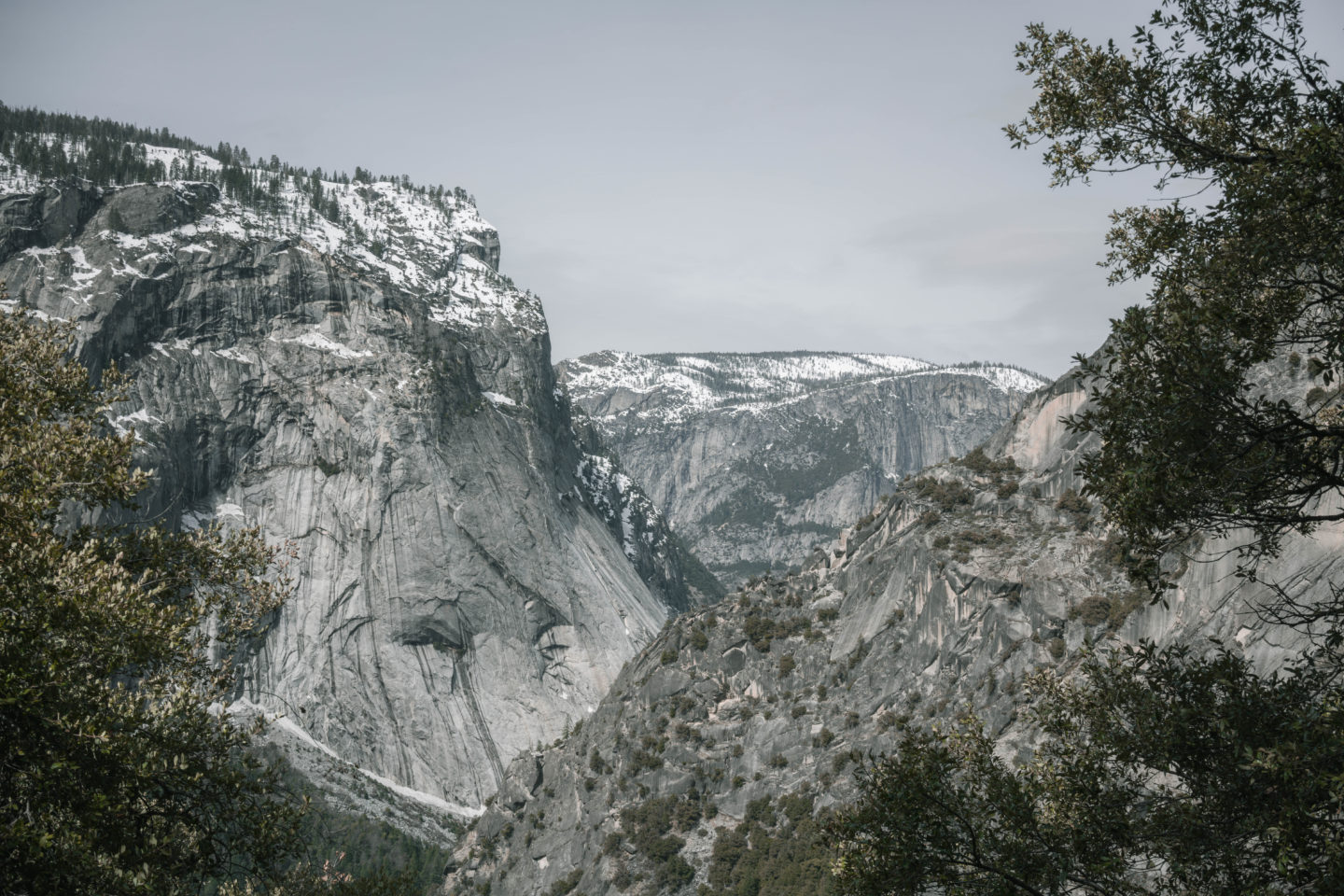
Check the weather before
Mountain weather can be unpredictable and change rapidly, so it’s vital that you are prepared.
Before you travel, be sure to listen to the latest reports on current road and snow conditions inside Yosemite, call 209-372-0200 and select option 1. Mobile phone service is limited inside the park so be sure to call prior to arrival.
You can find additional information on road closures on the National Park Service website.
You will need to carry tyre chains (but probably won’t use them)
Whether or not to carry snow chains for a Yosemite trip at the end of March was the thing I found most confusing about planning our visit.
As two Londoners who no longer own cars, yet alone snow chains, my boyfriend and I were somewhat perplexed by the prospect, and wondered if it really would be necessary – so we did our research.
What we found was that during winter, tyre chains may be required depending on weather conditions.
When entering a designated Chain Control Area, federal law requires that you carry tyre chains in your vehicle at all times – even if you’re driving a rental or you have snow tyres and/or a four-wheel-drive.
Driving without tyre chains in your vehicle – or on your tyres when required – could result in a hefty fine of up to $5,000. If you don’t have tyre chains when stipulated, the park rangers can even deny your entrance into the park entirely.
The NPS strongly recommends visitors to have chains in their possession November through to March, however, chain requirements can happen as early as September and late as May.
Chain requirements are dependent on the weather conditions, and not the time of year, which is why it’s crucial you check the weather before you visit.
Before we started our drive to Yosemite, we called 209-372-0200 to check on the current road conditions and chain requirements. The recording informed us the following tyre chain requirement was in effect: that chains must be carried, but they don’t need to be on your tyres.
Armed with this knowledge, about an hour’s drive from the park we stopped at an auto parts store in Mariposa and picked up our chains. If you’re not sure what size you need, you can take a picture of the measurements on your tyres and show it to the cashier – they should be able to advise you.
We didn’t need to use the chains at all whilst we were in Yosemite, but I’m certainly glad we got them and had the piece of mind knowing we wouldn’t be slapped with a hefty fine. We also managed to hold onto our receipt and were able to return the chains for a full refund on the drive back.
If you are completely averse to the idea of buying or using chains, alternatively, you can park your car off Highway 140 outside Yosemite before you encounter any chain controls at a YARTS bus stop, and use YARTS public transportation for travelling into and out of Yosemite.
Tioga Road and Glacier Point Road will be closed…
Before you book or embark on your trip to Yosemite in March, it’s important you know that hiking and driving options are more limited in the wintertime.
In winter, the Tioga Road and parts of Glacier Point Road are closed, restricting access to Tuolumne Meadows and Glacier Point.
…But Yosemite Valley and Wawona Road remain accessible
Although many hiking trails that go ‘up the walls’ of the valley are off limits due to heavy snowfall, the great news is most hiking trails in the valley are open all year round.
This includes Bridaveil Fall, Lower Yosemite Falls, Mirror Lake, the Valley Loop Trail and the Vernal-Fall-footbridge section of the Mist Trail.
Trails that go higher to the rim of the valley are harder to predict. If you want to try one of these hikes that are prone to potential closures, check the conditions ahead of time on the NPS website’s current conditions page that lists all trail closures.
As well as hiking trails, there are plenty of activities and spectacular viewpoints for you to discover in the valley including Tunnel View, Valley View and the Sentinel Bridge – more details on this to come in a future post!
Update| You can read that post here.
Wear proper gear
On our second day in Yosemite, we followed the Mist Trail as far as we could to the Vernal-Fall-footbridge and then diverted to the right onto the John Muir Trail.
On the Muir trail, we followed the winding switchbacks through the forest, climbing higher and higher until we reached the spectacular views at Clark Point.
For the final half of the ascent, we encountered some difficult snowy and icy stretches, which were at times very slippery and steep.
Be sure to take extra care if you plan to go hiking in these conditions and make sure you pack the right hiking gear. I’d highly recommend investing in some walking poles and ice grips for your shoes. Neither of us had these, but it would have made things a whole lot easier.
It goes without saying that you will need to wrap up warm- wear a warm jacket, woolly hat and gloves and pack a solid pair of waterproof hiking boots with good grip. I love my comfortable and waterproof Berghaus Explorer Ridge hiking boots.
Remember to take plenty of water with you and pack lots of snacks too.
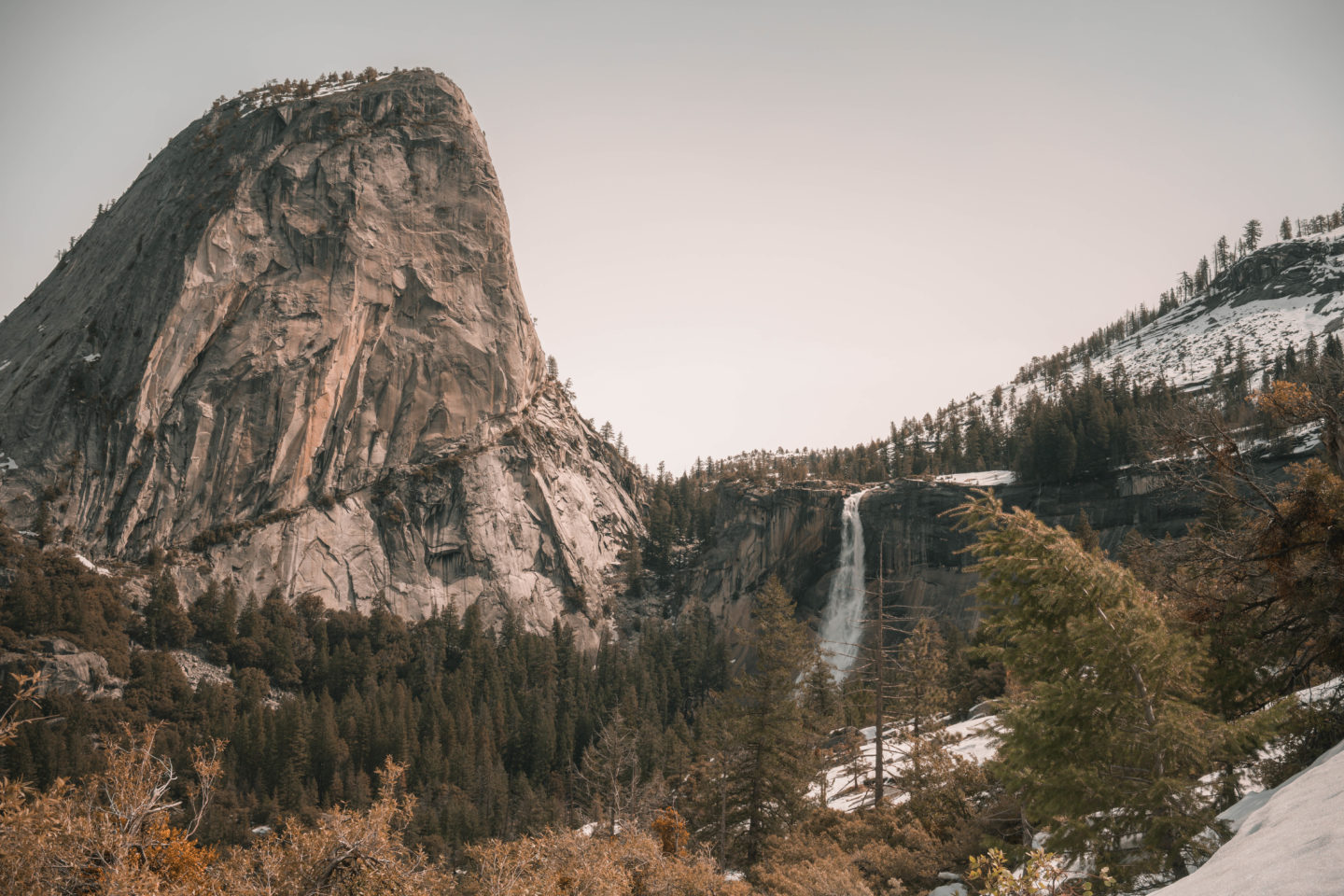
Know how to get around
Yosemite marked the mid way point for us on our California road trip, so we had the use of our rental car. We personally had no problems with traffic or finding parking spaces whilst within the park in March.
Public transportation to Yosemite Valley is available every day of the year, weather permitting. Once you’re in the park, the Yosemite Valley free shuttle bus also operates year-round. You can view the shuttle bus route map online here.
How and where to pay entrance fees
Park entrance fees and passes can be paid for either online here or in person from any of the park entrances. A seven day entry pass for a non commercial vehicle costs $35.
Get gas before you enter the park
There are no petrol pumps available in Yosemite Valley itself so you’ll need to plan ahead.
The closer you get to Yosemite, the higher gas prices will be so I’d recommend filling up your tank on the drive in.
If you don’t mind paying a little more for gas, the closest gas stations that are open all year round are at Wawona (Highway 41), El Portal (Highway 140) and at Crane Flat (Highway 120).
Accommodation is much easier to find
Another huge benefit of visiting Yosemite at this time of year is that it’s much easier to find reservations and cheaper rates!
Accommodations inside Yosemite during summer can often require reservations months or even years ahead, but during winter, walk ups are much more common.
We had initially booked to stay in a heated cabin at Half Dome village (previously known as Curry village), but due to damage caused by heavy snowfall before we arrived, we were moved to the quaint and cosy Yosemite Valley lodge free of charge. Located in Yosemite village it’s perfectly located for exploring the valley.
For more hardy travellers, four of Yosemite’s campgrounds also remain open throughout the year on a first come, first serve basis.
Check out other accommodation options below:
Booking.comIt’s only 4 hours drive from San Francisco
If you’re looking for a memorable weekend getaway from the Bay Area, then Yosemite should definitely be on your radar.
It’s makes for a great trip from Northern California, and in our opinion, was the undisputed star of our California road trip!
Disclaimer: Some of the above links are affiliate links. If you choose to purchase using the above buttons, I receive a small commission at no extra cost to you. This helps towards the upkeep of this website for which I am very grateful.
Save this post for later on Pinterest
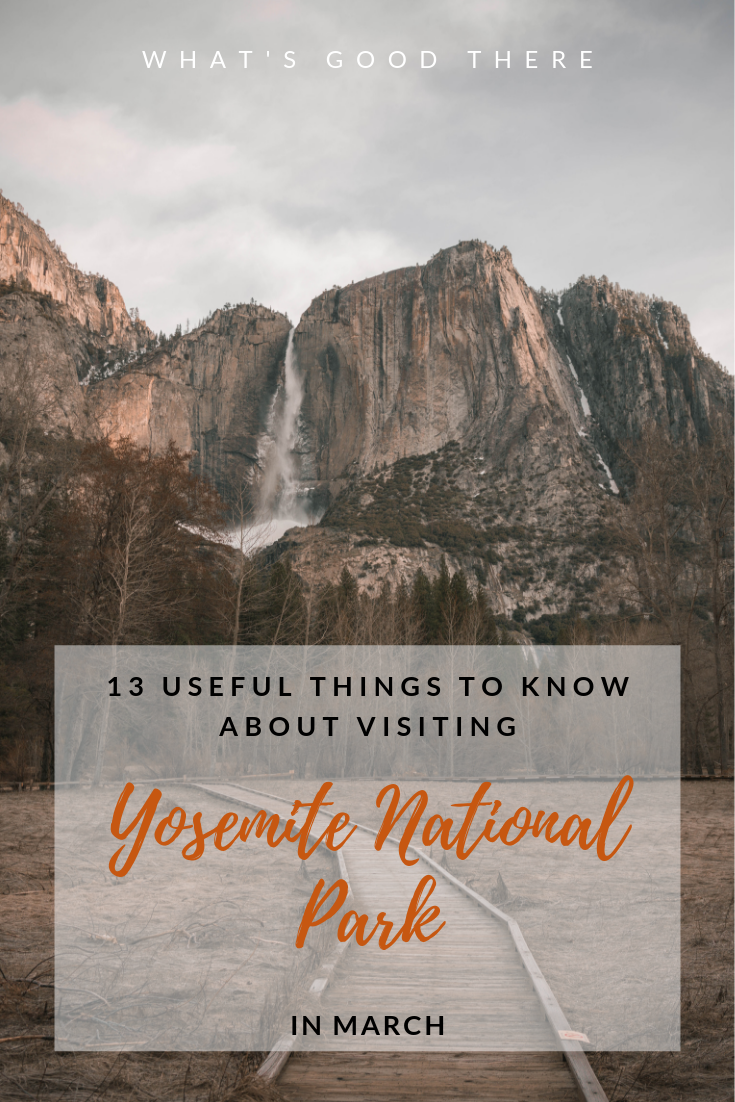
Planning a trip to Yosemite? Read check out this post on 8 wonderful things to do in Yosemite in March.

